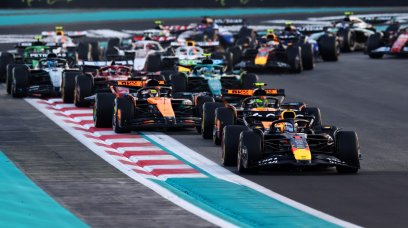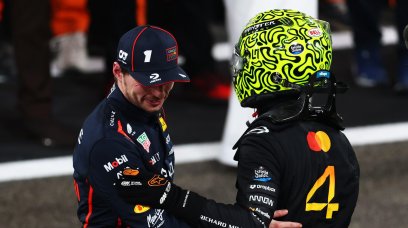Formula 1 has changed the rules regarding how teams can use gearboxes throughout a season, introducing a similar restriction on the parts as is already in place with power unit components. Up until 2021, the restrictions for gearboxes were simple. Should a driver complete six consecutive Grands Prix (i.e. qualifying and the race) with the same gearbox, then the team could fit the car with a new one without penalty. If the gearbox was required to be changed before those six consecutive events had passed, the car affected would be given a five-place grid penalty. The exception was that, if a driver retired from a race, a new gearbox could be fitted at the next race without penalty. Drivers could also turn back to fit older, used gearboxes if desired, which was usually done for practice, leading to the terminology of the 'practice gearbox'. But, the rules have been tweaked for this year, meaning grid penalties could become more prevalent in 2022.
F1 introduces a four-gearbox limit
The rules for penalties have separated out the gearbox from the internal components it encloses. But, despite this, the same amount of components are permitted when talking about the outer casing mounted on the cars, as well as the cassette that houses the gear change and driveline components. The 2022 rules will enforce a four casing and cassette limit on the cars taking part in the championship. This means that every driver is only permitted four 'gearboxes' for the season, and can pick and choose from that pool of four to get through the season. Like the power unit rules, this means that drivers could run short on working gearboxes in their pool by the end of the season. Once a driver requires a gearbox in excess of that four-component rule, they will receive a five-place grid penalty, with the same penalty being imposed for every subsequent gearbox introduction. The same numerical limit will be imposed on the components within the gearbox cassette itself. For the more intricate gear-change components and mechanisms, and the components involved in the transmission of torque between the gearbox and the driveshafts, F1 has introduced a strict limit of four new components for the season. Once a driver requires more of any of these components, a five-place grid penalty will be imposed – the same penalty being imposed for any subsequent changes.
F1 gearboxes also enter a 'freeze' until 2025
Just like the upcoming engine freeze , which kicks in on 1 March, F1 has introduced a specification freeze on gearboxes which will remain in effect until 2025. The individual gearbox designs (referring to the casing, cassette, driveline and gear-change components) will all be homologated at the same time as the power units. Once these have been signed off on by the FIA's Technical Department, the teams/manufacturers will be bound to their designs until 2025. Just a single upgrade will be permitted between now and the 2025 season, with that upgrade only allowed between individual seasons. In the event of a manufacturer supplying a customer team with a gearbox, the teams must each use the same design – whichever one the supplier has homologated. Just like the power units, modifications may only be made to resolve issues related to safety, reliability and not yield any performance advantage. In order to be given permission to modify the design, the manufacturer must write to the FIA with a summary of the problem, evidence of the research undertaken to fix the issue and why they believe the solution will fix it. The FIA will consult with other gearbox manufacturers to assess the viability of the fix, and will permit the modification if satisfied.
Most read








